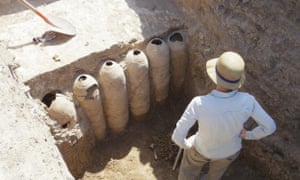via 3 Quarks Daily: Ed Yong in The Atlantic

Sometimes, Audrey Dussutour enters her lab in Toulouse to find that one of the creatures within it has escaped. They tend to do so when they’re hungry. One will lift the lid of its container and just crawl out. These creatures aren’t octopuses, which are known for their escape artistry. They’re not rats, mice, flies, or any of the other standard laboratory animals. In fact, they’re not animals at all.
They are slime molds —yellow, oozing, amoeba-like organisms found on decaying logs and other moist areas.
Continue reading
===================================
via Boing Boing by Caroline Siede
In this new episode of the Cracked series “Everything Boring Is Awesome”, the show digs into the secretly insane, raucous world of classical music.
Watch and enjoy
===================================
via OUP Blog by Geoff Cottrell

The ancient Greek philosophers believed that the Sun, Moon, planets, and stars were mathematically perfect orbs, made from unearthly materials. These bodies were believed to move on perfectly symmetric celestial spheres, through which a backdrop of fixed stars could be seen, rotating majestically every 24 hours. At the centre was the motionless Earth. For the Greeks, the power of reason was more important than observation. Some 2000 years later, this was the prevailing cosmology when the telescope appeared on the stage.
Continue reading
===================================
via Boing Boing by Andrea James
Beauty of Science decided to dissolve M&Ms in water, and the result is surprisingly spectacular. It's like watching solar flares or the birth of a nebula. Be sure to watch in 4K!
Check it out here
===================================
… we are taking a closer look at some of the documents held at The National Archives relating to the complicated nature of Katherine Howard’s sexual relationships and the reaction of the court to these revelations.
Continue reading
===================================
via 3 Quarks Daily by Hari Balasubramanian
I've noticed that it isn't easy to strike up a meaningful conversation with someone who doesn't fit into your professional or social circle. Even among strangers we look for clues and – understandably – seek out people with whom we might have something in common. This behaviour appears to erect subtle barriers between groups of people who live or work in the same physical space – say the same neighbourhood or even the same building – but hardly interact.
Continue reading
===================================
via the Lone Wolf Librarian
===================================
Undergoing chemical, biological and nuclear weapons training in preparation for Iraq was nerve-wracking, but excavating here has been a revelation
via the Guardian by Mary Shepperson

Test trenches: expect the unexpected. And then try to explain it.
Photograph: Mary Shepperson
Before the very first time I was going to excavate in Iraq, back in 2012, I have to admit I was a little apprehensive; I mean who wouldn’t be? Thankfully the university running the project completely allayed my fears by sending me on a chemical, biological and nuclear weapons training-day, followed up with a course on unexploded ordnance and not stepping on landmines. After this I was so wholly put at ease that I thought about maybe staying at home instead.
Continue reading
An archaeological paradise? Definitely. Be aware, though, that this article is a time suck for those interested in history.
===================================
via Big Think by Philip Perry

It’s a simple question on the lips of every sci-fi fan since the dawn of the genre. Why haven’t we found alien life? This is known as the Fermi Paradox, named after physicist Enrico Fermi. It’s the idea that the sheer multiplicity of Earth-like planets should produce life somewhere and with a high probability, an alien civilization, if not several. So why haven’t we found them or why haven’t they found us? Several theories have been posited.
Continue reading
===================================
The Long and Brutal History of Fake News
Bogus news has been around a lot longer than real news. And it’s left a lot of destruction behind.
via Arts and Letters Daily: Jacob Soll in Politico
The fake news hit Trent, Italy, on Easter Sunday, 1475. A 2 ½-year-old child named Simonino had gone missing, and a Franciscan preacher, Bernardino da Feltre, gave a series of sermons claiming that the Jewish community had murdered the child, drained his blood and drunk it to celebrate Passover. The rumors spread fast. Before long da Feltre was claiming that the boy’s body had been found in the basement of a Jewish house. In response, the Prince-Bishop of Trent Johannes IV Hinderbach immediately ordered the city’s entire Jewish community arrested and tortured. Fifteen of them were found guilty and burned at the stake. The story inspired surrounding communities to commit similar atrocities.
No comments:
Post a Comment